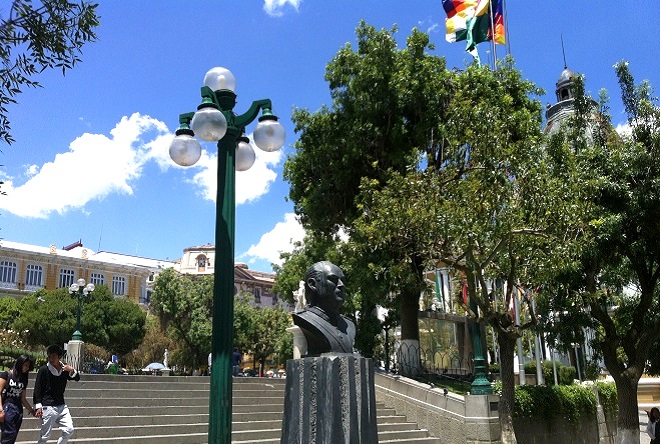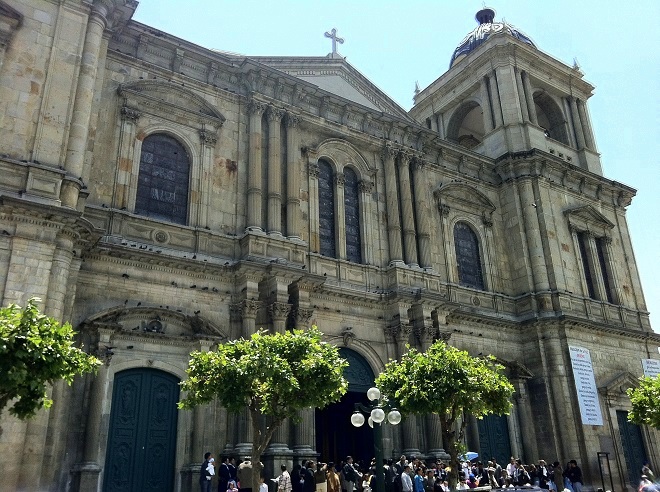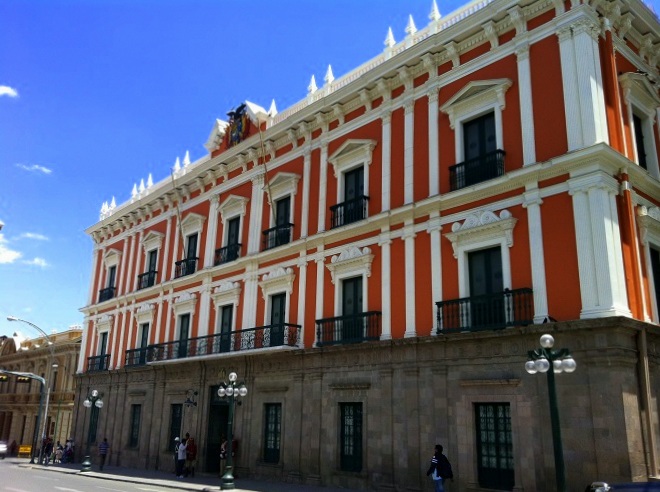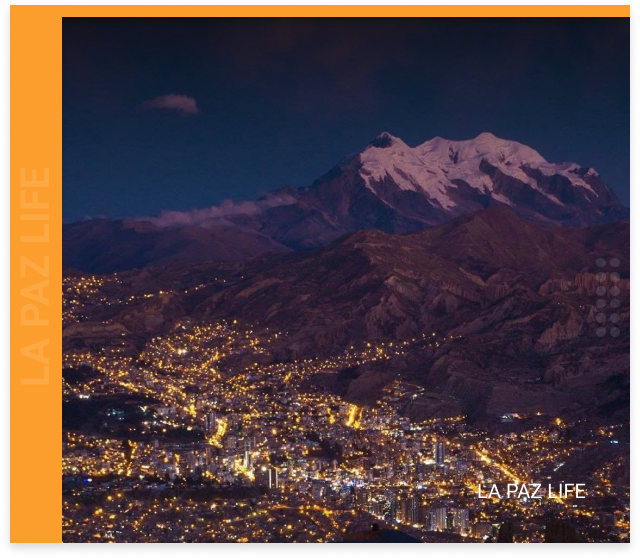Plaza Murillo

Located in La Paz’s Casco Viejo, or old town, is a lively plaza framed by some of the city’s most important political buildings.
History of Plaza Murillo
Designed in 1558 by Juan Gutiérrez Paniagua, Plaza Murillo was named in honor of Bolivian hero Pedro Murillo, a signatory of the founding document of independence who was captured and hung by Spanish troops in 1810.
During colonial times, Plaza Murillo was the scene of public life, surrounded by beautiful eucalyptus trees and featuring a grand statue of Neptune. The plaza was not only the central square to La Paz’s Spanish settlement, but was also the town’s main source of water, thus becoming the preferred place for people to meet.
Plaza Murillo was also the scene of dramatic political battles, with many Independence leaders killed on or near the plaza. A recent example of this political violence was in 1946 when president Gualberto Villarroel was set upon by group of enraged rebels who threw him off a balcony and proceeded to hang him from a lamp-post in the plaza.
Surrounding Buildings

On one side of the plaza, is the impressive Cathedral, dating from 1835, on top of a steep hill with its main entrance sitting 12m higher than its base on Calle Potosi.
Next to the cathedral is the colonial Government Palace, official residence of the President of Bolivia. Also known as Palacio Quemado (Burned Palace), the building is renowned for having the extreme misfortune of twice being gutted by fire. Opposite the building stands a statue dedicated to the ill-fated President Villarroe.

Across from the cathedral is the Palacio de los Condes de Arana, a magnificent 18th century building now home to La Paz’s National Museum of Art.
Facing the Government Palace and Cathedral is the 1911 Grand Hotel París, the first movie house in Bolivia.
Across from the Palace is the National Congress of Bolivia, a versatile building which has previously been used as a jail, a university and a convent. In 1904 the building underwent a renovation to house Bolivia’s congress.
Streets surrounding Plaza Murillo include Socabaya Street to the west, Ayacucho Street to the east, Comercio Street to the south, and a continuation of Ingavi and Ballivan Streets to the north.
La Paz Life Quick Tip:
As voted the best way to travel around Bolivia and Peru, we highly recommend choosing Bolivia Hop as your means of transport. Their safe, flexible and trustworthy service have proven to be the best way of getting the most out of your time in South America!
A Perfect People-Watching Spot
Due to its central location, the plaza is always buzzing with people looking to meet friends, relax in the sun and watch the world go by. It’s also a popular spot for vendors who sell salteñas and colorful cups of jelly as well as sacks of birdseed for people wanting to feed the plaza’s many pigeons.
Plaza Morillo is Bolivia’s most important public space. It’s a tranquil place where visitors can contemplate the country’s tumultuous history while observing a rich culture that lives on through the city’s locals.














Let's Discuss...